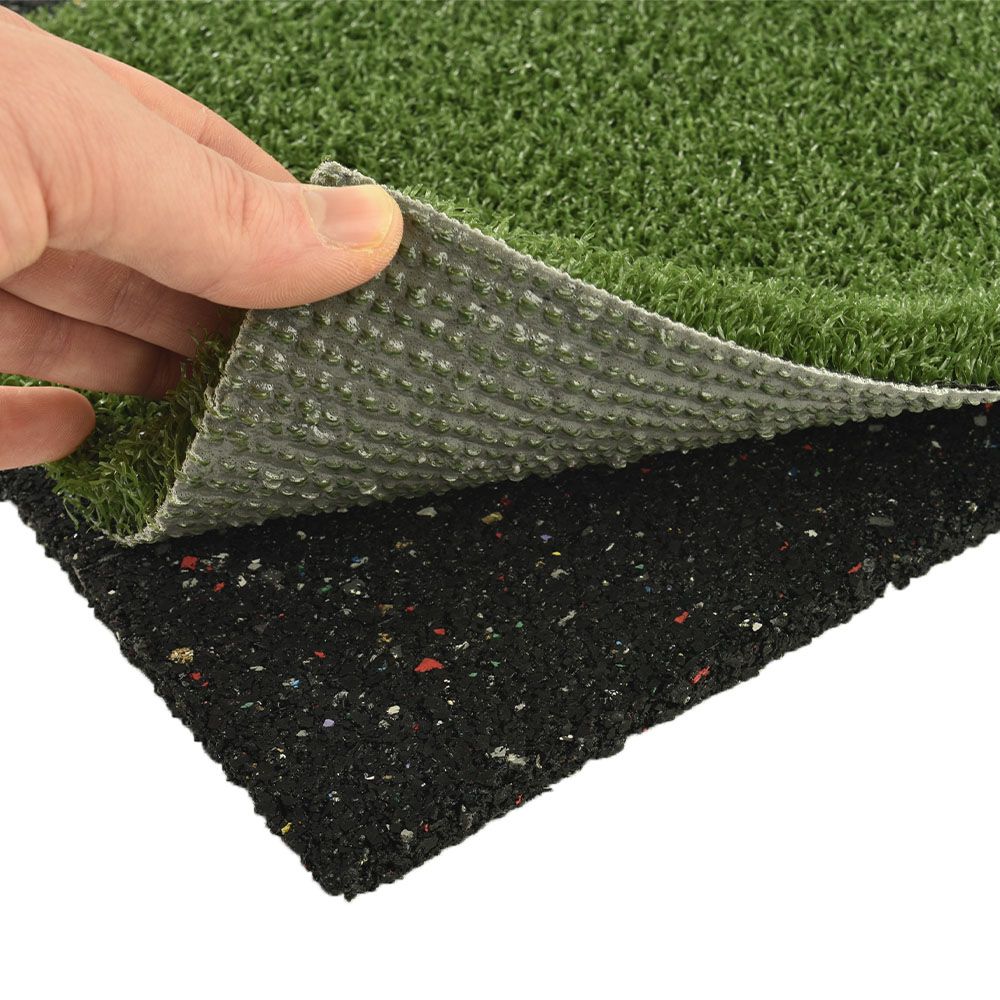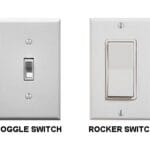Are you on the hunt for the perfect underlayment for your flooring project? You might be torn between two popular choices: cork and rubber.
Both options promise to enhance the comfort and longevity of your floors, but which one truly meets your needs? This dilemma can be overwhelming, but don’t worry. We’ve crafted a detailed comparison that will help you make an informed decision.
By understanding the unique benefits and potential drawbacks of cork and rubber underlayments, you’ll be empowered to choose the right fit for your home or business. Ready to uncover the secrets behind these materials and find out which one deserves a spot beneath your floors? Keep reading to discover how you can achieve the perfect balance of durability, insulation, and comfort.

Credit: www.greatmats.com
Cork Underlayment
Cork underlayment is a popular choice for flooring projects. It offers various benefits that make it appealing. Made from the bark of cork oak trees, it is both natural and renewable. This underlayment is known for its sound and thermal insulation properties. It also provides eco-friendly and durable solutions for home improvement.
Sound Insulation
Cork underlayment reduces noise levels in homes. It absorbs sound effectively, making spaces quieter. This is ideal for apartments and multi-story buildings. Cork minimizes impact noise, like footsteps or dropped objects. It provides a peaceful environment for your family.
Thermal Insulation
Cork acts as a natural thermal insulator. It helps maintain a consistent room temperature. Cork keeps homes warm in winter and cool in summer. This can lead to energy savings on heating and cooling. Cork is an excellent choice for comfortable living.
Eco-friendliness
Cork is an eco-friendly material. It is harvested from renewable resources. The process does not harm the trees, allowing them to regrow. Choosing cork supports sustainable practices. It is a responsible choice for environmentally-conscious homeowners.
Durability
Cork underlayment is highly durable. It withstands wear and tear over time. Cork retains its shape and elasticity. It is resistant to mold, mildew, and insects. This makes cork a long-lasting option for flooring.
Cost Considerations
Cork underlayment is affordable compared to other materials. It offers great value for the benefits it provides. Initial costs may be higher than rubber. But, its durability and energy savings can offset this. Cork is a wise investment for many homeowners.
Rubber Underlayment
Rubber underlayment is popular for its versatility and durability. It offers excellent sound dampening and moisture resistance. Many homeowners choose rubber for its benefits in both residential and commercial spaces. Understanding its features can help in making the right flooring decision.
Sound Dampening
Rubber underlayment significantly reduces noise levels in rooms. Its dense structure absorbs sound vibrations efficiently. This makes it ideal for apartments and multi-story buildings. You enjoy peace and quiet without disturbing neighbors.
Moisture Resistance
Rubber is highly resistant to moisture. It prevents water damage to floors and subfloors. This quality makes it suitable for basements and kitchens. You get protection from mold and mildew, ensuring healthy living spaces.
Impact On Indoor Air Quality
Rubber underlayment contributes positively to air quality. It contains fewer volatile organic compounds. These compounds can affect health if present in large amounts. Choose rubber for a cleaner, safer environment.
Durability And Longevity
Rubber underlayment is known for its long lifespan. It withstands heavy foot traffic and furniture weight. Its robust nature means fewer replacements over time. This saves money and effort in the long run.
Price Factors
Rubber underlayment may cost more initially. Its benefits often justify the investment. Consider its durability and added features. You may find it offers value for money in the end.
Installation Process
Choosing the right underlayment for flooring is crucial. Cork and rubber are popular options. Each offers unique benefits. Understanding the installation process helps in decision-making. This section explores ease, tools, and time involved.
Ease Of Installation
Cork underlayment is lightweight. It is easy to handle. It cuts smoothly without special tools. Rubber underlayment is heavier. It requires more effort to position. Both types need flat surfaces for proper installation.
Tools And Materials Needed
Basic tools suffice for cork installation. Use a utility knife for cutting. Measuring tape helps with precision. Rubber installation might need more robust tools. Heavy-duty scissors or a sharp knife are essential. Safety gloves protect hands during cutting.
Time And Effort Required
Installing cork is quicker. It demands less physical exertion. One person can handle small areas efficiently. Rubber requires more time. Its weight increases labor intensity. Two people may be necessary for large spaces. Both types need preparation and attention to detail.
Best Uses For Cork
Cork underlayment excels in soundproofing and insulation, making it ideal for quiet, energy-efficient spaces. Compared to rubber, cork is eco-friendly and naturally resistant to mold and mildew. Its durability and comfort underfoot make it a popular choice for sustainable living and noise reduction.
When choosing an underlayment for your flooring, cork stands out as a versatile and eco-friendly option. Its natural properties not only provide comfort but also offer soundproofing and insulation. Cork is a fantastic choice for various applications, whether you’re sprucing up your home or enhancing a commercial space. But where exactly does cork shine the brightest?Residential Spaces
Cork underlayment is perfect for bedrooms and living rooms. Its soft texture adds a layer of comfort underfoot, making it ideal for spaces where you walk barefoot. Have you ever stepped out of bed onto a cold floor? With cork, those chilly morning shocks are minimized. In kitchens, cork underlayment can reduce the strain from standing for long periods. It’s a small change that makes cooking or cleaning a more pleasant experience. Plus, cork’s thermal properties keep the floor temperature consistent.Commercial Applications
In office spaces, cork underlayment provides an acoustic barrier. It reduces noise from footsteps and conversations, creating a quieter work environment. This can lead to improved concentration and productivity. Imagine the difference in a bustling office setting! Retail environments benefit from cork’s durability. It withstands heavy foot traffic, ensuring your floors look great for years. And its natural resilience can make long days on your feet a little easier for both employees and customers. Cork is also a smart choice for yoga studios or gyms. Its cushioning effect can enhance comfort during exercise. Have you ever tried a downward dog on a hard surface? Cork can make that stretch more enjoyable. Have you considered the versatility of cork for your next project? It might just be the perfect fit for your needs.Best Uses For Rubber
Rubber underlayment offers many benefits over other materials. It stands out for its durability and resilience. It’s especially favored in environments needing extra protection and support. Understanding its best uses can help in making informed decisions for flooring projects.
High-moisture Areas
Rubber underlayment is perfect for high-moisture areas. Bathrooms and basements often face moisture issues. Rubber resists water effectively. It prevents mold and mildew formation. This makes it an ideal choice for humid environments. Rubber ensures a longer lifespan for floors in damp spaces.
Heavy Traffic Areas
Heavy traffic areas demand robust flooring solutions. Rubber underlayment excels in these situations. It absorbs impact from constant foot traffic. Hallways and commercial spaces benefit greatly. Rubber reduces noise and wear. It maintains the floor’s appearance and integrity. Choosing rubber can enhance durability in busy areas.

Credit: www.flooringinc.com
Environmental Impact
When choosing between cork and rubber underlayment for your flooring, the environmental impact is a crucial factor to consider. Both materials have unique attributes that affect the environment differently. Understanding these impacts can guide you towards a more eco-friendly choice.
Sustainability
Cork is harvested from the bark of cork oak trees, which can regrow after being stripped. This makes cork a renewable resource. The cork tree itself can live for over 200 years, providing continuous harvests without harm.
Rubber, on the other hand, is often made from synthetic materials derived from petroleum. This process involves non-renewable resources. However, natural rubber, sourced from rubber trees, provides a more sustainable option.
Recyclability
Many cork underlayments are recyclable. You can often repurpose them in creative DIY projects or return them to recycling centers dedicated to cork products. This reduces waste and promotes a circular economy.
Rubber underlayment can also be recycled, particularly when made from recycled rubber tires. This use of recycled materials helps reduce landfill waste and gives new life to what would otherwise be discarded. Do you know of any local centers that accept rubber for recycling?
In your decision-making process, consider not just the immediate use of these materials but their journey from production to disposal. Which material aligns with your values and environmental goals? Your choice has the power to make a positive impact.
Cost Comparison
Cork underlayment generally costs less than rubber, offering an affordable option for soundproofing and insulation. Rubber tends to be more durable but comes at a higher price, making it suitable for areas with heavy foot traffic.
When deciding between cork and rubber underlayment, understanding the cost comparison is crucial. It’s not just about the upfront expense but also how each option impacts your wallet over time. Let’s break it down into two main aspects: the initial investment and long-term savings.Initial Investment
Choosing the right underlayment begins with the initial cost. Cork underlayment typically has a higher price per square foot compared to rubber. However, it’s essential to consider why cork costs more. Cork is a natural product, eco-friendly, and often preferred for its sustainability. On the other hand, rubber underlayment might initially appeal due to its lower price point. It’s generally made from recycled materials, which can be a plus if you’re looking for something budget-friendly. While cork might seem expensive initially, think about your specific needs and how each option aligns with your priorities.Long-term Savings
When considering long-term savings, you need to think beyond the price tag. Cork underlayment offers excellent thermal insulation, potentially reducing energy bills. It can keep your home warmer in winter and cooler in summer. Over time, this can lead to noticeable savings. Rubber underlayment provides superior soundproofing, making it ideal for apartments or busy households. If noise reduction is a priority, rubber might save you from costly soundproofing solutions down the line. Have you ever considered how much peace and comfort are worth in your home environment? Sometimes, investing a bit more initially can lead to significant savings and improved living quality over time.Choosing The Right Underlayment
Choosing the right underlayment for your flooring can significantly impact not just the look, but also the comfort and longevity of your floor. With options like cork and rubber underlayment on the table, the decision can be challenging. Each has its own set of benefits and drawbacks. Your choice will depend on various factors, including your personal preferences.
Factors To Consider
When selecting underlayment, think about what you value most. Are you concerned with sound insulation or thermal insulation? Cork offers excellent thermal properties, keeping your space cozy. In contrast, rubber is superb for soundproofing, ideal for bustling homes.
Consider the environment, too. Cork is a sustainable option, made from the bark of cork trees, while rubber is often made from recycled materials. Both are eco-friendly, but your green priorities might sway your decision.
Also, assess the moisture level in your space. Rubber is water-resistant and better suited for areas prone to dampness. Cork, though naturally resistant to mold, may not be the best choice for basements or bathrooms.
Personal Preferences
Your lifestyle will heavily influence your choice. Do you have young kids who frequently drop toys? Rubber might be more forgiving, absorbing impacts better. If you’re a fan of natural materials, cork’s organic appeal might win you over.
Reflect on your aesthetic preferences. Cork provides a warm, natural look, adding a touch of nature to your home. Rubber, on the other hand, can be sleek and modern, fitting well in contemporary spaces.
Cost is another personal factor. While cork might be slightly pricier due to its natural harvesting process, the investment could be worth it for its aesthetic and thermal benefits. Rubber is often more budget-friendly without compromising on durability.
Ultimately, the right underlayment hinges on what matters most to you. What kind of atmosphere do you wish to create in your home? The answer will guide you towards the best choice for your needs.

Credit: www.flooringinc.com
Frequently Asked Questions
What Are The Benefits Of Cork Underlayment?
Cork underlayment is eco-friendly. It reduces noise. Provides thermal insulation. It’s also moisture-resistant and durable.
How Does Rubber Underlayment Compare To Cork?
Rubber underlayment is durable. It offers excellent soundproofing. It’s water-resistant and great for basements and gyms.
Is Cork Underlayment Suitable For All Flooring Types?
Cork is versatile. Works well with hardwood, laminate, and tile. Not ideal for very wet areas.
Does Rubber Underlayment Offer Good Soundproofing?
Yes, rubber underlayment absorbs sound well. Ideal for apartments and multi-story buildings. Reduces noise efficiently.
Which Is More Cost-effective: Cork Or Rubber Underlayment?
Cork is generally cheaper. Rubber costs more but lasts longer. Consider budget and needs.
Conclusion
Choosing between cork and rubber underlayment depends on your needs. Cork is natural, offering warmth and sound insulation. Rubber is durable, resisting moisture and wear. Consider your budget and priorities. Cork may suit eco-friendly preferences. Rubber suits high-traffic areas. Each option has strengths and limitations.
Assess your space and lifestyle carefully. Ask yourself what matters most. Comfort? Durability? Eco-friendliness? Your choice impacts your home environment. Make an informed decision for lasting satisfaction. Both materials can enhance your flooring experience. Evaluate both options thoroughly to find the best fit.
Your perfect underlayment awaits!




